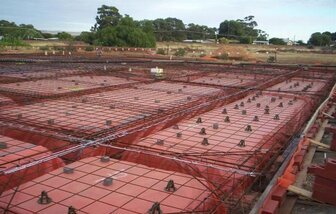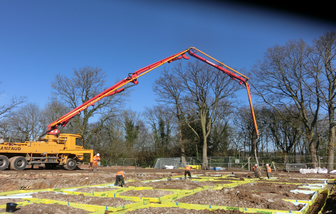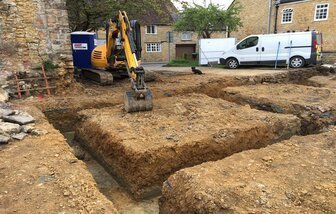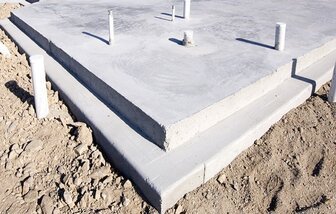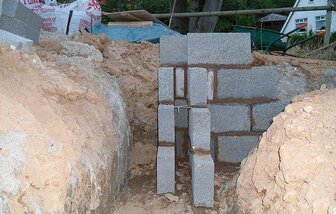The Dos and Don’ts of Concreting for Your Next Construction Project
Essential Dos and Don'ts for Successful Concreting
When it comes to construction projects in the UK, concreting plays a crucial role in providing a solid foundation and structural support. Whether you are building a new home, a commercial building, or even a small DIY project, understanding the dos and don’ts of concreting is essential to ensure a successful outcome.
This article provides a comprehensive guide on the dos and don’ts of concreting, including proper planning and preparation, using quality materials, following correct mixing techniques, ensuring adequate curing, and working with experienced professionals.
Avoid rushing the process, overloading the concrete, neglecting safety measures, using improper finishing techniques, and neglecting maintenance. By following these guidelines, you can achieve a durable and reliable concrete structure that will stand the test of time.
Concrete is a widely used construction material that requires proper handling and care to ensure its durability and structural integrity.
We will discuss the dos and don’ts of concreting for your next construction project, covering aspects such as the concrete mix, pouring, curing process, and more.
Following these guidelines will help you achieve a successful concrete installation.
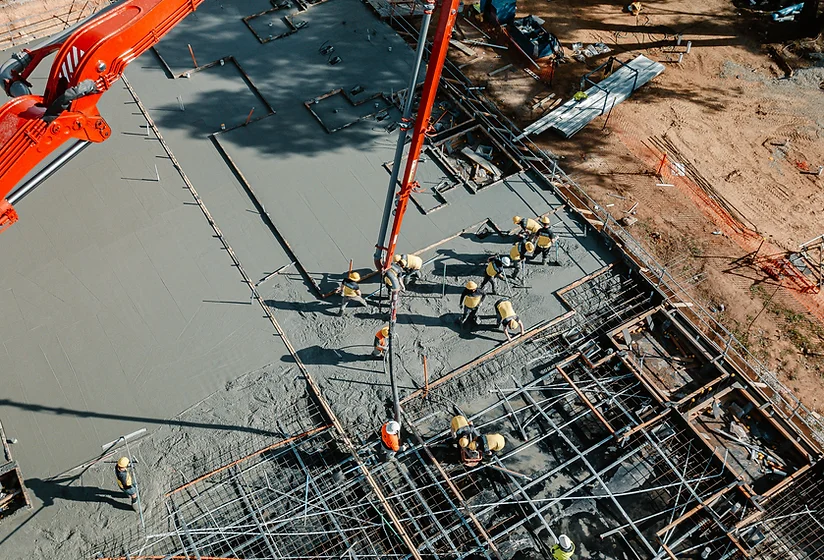
Before starting any concreting project, proper planning and preparation are vital. This includes determining the required amount of concrete, the necessary tools and equipment, and the appropriate mix design. Make sure to calculate the correct proportions of cement, aggregates, and water to achieve the desired strength and durability.
Selecting the appropriate concrete mix for your project is crucial for achieving the desired strength and durability. Consult with ready mix concrete companies and follow the manufacturer’s labels carefully to ensure the right mix for your specific application, whether it’s a floor slab, concrete surface, or upright concrete columns.
Don’t: Use a Poor-Quality Mix
Using a low-quality mix can compromise the structural integrity of your concrete project. Always source your materials from reputable suppliers and follow the recommended mix ratios to avoid potential issues.
Preparing the site for pouring concrete involves clearing debris, levelling the ground, and installing formwork to create the desired shape. Ensure that the site is adequately prepared and that any necessary reinforcement is in place before pouring concrete.
Don’t: Rush the Pouring Process
Rushing the pouring process can lead to uneven concrete surfaces, air pockets, and other issues. Take the time to pour the concrete evenly and consistently, ensuring that the formwork is filled without gaps or voids.
Curing concrete is an essential step in the concreting process, as it allows the concrete to achieve its full strength and durability. Implement proper curing practices, such as moist curing, using concrete insulating blankets, or applying curing compounds to ensure the concrete achieves optimal strength.
Don’t: Allow the Concrete to Dry Out Too Quickly
Allowing the concrete to dry too quickly can compromise its strength and cause cracks. Keep the concrete damp during the curing process by covering it with plastic sheeting, polyethylene, or other materials that retain moisture.
Temperature fluctuations can negatively impact the structural integrity of your concrete project. In cold weather, use insulating blankets or other methods to maintain a consistent temperature during the curing process. In hot weather, consider using a curing compound or moist curing methods to prevent rapid evaporation.
Don’t: Neglect the Effects of Weather on Wet Concrete
Failing to protect wet concrete from extreme temperatures can lead to cracking, spalling, and other issues. Always monitor the weather conditions during the concrete installation and take appropriate measures to ensure the concrete’s long-term durability.
Different concrete surfaces may require specific curing methods to achieve the best results. For example, pond cure concrete slabs by forming temporary berms around the edges and filling them with water. For vertical surfaces, apply curing compounds or plastic sheeting to maintain moisture during the curing process.
Don’t: Use a One-Size-Fits-All Approach to Curing
Not all curing methods are suitable for every concrete project. Consult the manufacturer’s guidelines and follow best practices for your specific application to ensure the best results. a successful construction project.
By selecting the right concrete mix, properly preparing the site, implementing appropriate curing methods, and protecting your concrete from extreme temperatures, you can ensure the longevity and structural integrity of your concrete project. Always consult with experts and follow industry best practices to achieve the best possible outcome.
Don’t Rush the Process
Concreting is not a task to be rushed. Take the time to properly plan, prepare, and execute each step of the process. Rushing can lead to mistakes, such as improper mixing, inadequate curing, or uneven finishing. Patience and attention to detail are key to achieving a successful concreting project.
2. Avoid Overloading the Concrete
Concrete has a specific load-bearing capacity. Avoid overloading the concrete by placing excessive weight on it before it has fully cured. This can lead to cracks, structural damage, and compromise the overall integrity of the structure. Allow sufficient time for the concrete to gain strength before subjecting it to heavy loads.
3. Don’t Neglect Safety Measures
Working with concrete can be physically demanding and potentially hazardous. Always prioritize safety by wearing appropriate personal protective equipment, such as gloves and safety glasses. Additionally, ensure that the work area is properly secured and that all necessary safety precautions are in place.
4. Avoid Improper Finishing Techniques
The finishing of the concrete surface is important for both aesthetics and functionality. Avoid improper finishing techniques, such as overworking the surface or using the wrong tools. Improper finishing can result in a weak surface, increased risk of cracking, and a less visually appealing end result.
5. Don’t Neglect Maintenance
Once the concreting project is complete, it is important to regularly maintain the concrete to ensure its longevity. This includes regular cleaning, sealing, and addressing any signs of damage or wear. Proper maintenance will help preserve the integrity of the concrete and extend its lifespan.
Using high-quality materials is crucial for a long-lasting and reliable concrete structure. Invest in good quality cement, aggregates, and admixtures from reputable suppliers. This will ensure that your concrete mix is of the highest standard and will withstand the test of time.
Properly mixing the concrete is essential to achieve a homogeneous mixture. Follow the recommended mixing techniques, whether using a concrete mixer or manually mixing with a shovel. Ensure that all ingredients are thoroughly combined to avoid weak spots or uneven distribution of aggregates
Curing is the process of maintaining the moisture content in the concrete to allow it to gain strength and durability. Adequate curing is crucial for preventing cracks and ensuring the longevity of the structure. Use curing compounds or cover the concrete with plastic sheets or damp burlap to retain moisture during the curing period.
If you are not confident in your concreting skills, it is always best to work with experienced professionals. They have the knowledge and expertise to handle the entire concreting process, from preparation to finishing. Hiring professionals will give you peace of mind and ensure that your project is completed to the highest standards.
Concreting is a critical aspect of any construction project in the UK. By following the dos and don’ts outlined above, you can ensure that your next concreting project is a success. Proper planning, using quality materials, following correct techniques, and prioritizing safety will lead to a durable and reliable concrete structure that will stand the test of time.
Foundations for the Empire State Building?
The Empire State Building, standing tall and proud in the heart of New York City, is an iconic landmark that has captivated people around the world for
Why building foundations are necessary?
Foundations are the bedrock of any building, be it a humble house or towering high-rise buildings. They have the vital job of transferring the entire weight
The perfect concrete pour for your construction project
We will discuss the dos and don’ts of concreting for your next construction project, covering aspects such as the concrete mix, pouring, curing process
What is a raft foundation?
Raft foundations are a popular choice for many construction projects, providing a stable and durable base for buildings. Explore the benefits of raft foundations, the construction process
What is a building foundation?
A building foundation is the lowermost part of a structure that is in direct contact with the ground. It is designed to distribute the weight of the building evenly and transfer it to the underlying soil or rock.
Types of building foundations
This article discusses the different types of building foundations in the UK, including strip foundations, raft foundations, piled foundations, trenchfill foundations, pad foundations, caisson foundations
How long do foundations take to cure?
A step-by-step guide is required, starting with marking lines to indicate where to dig the foundations trenches. After landscaping, shuttering, reinforced with timber, must be used
How to set out building foundations
Setting out the building foundations of a construction project is a critical stage, and it requires the use of specialised tools and materials. In the UK, the most common tools
How deep do building foundations need to be?
Building foundations are a critical component of any construction project in the UK, and it is important to ensure that they are constructed to the required depth.
Foundation building regulations
The regulations are designed to ensure that construction projects are structurally sound and meet certain safety standards. This includes the use of appropriate foundation systems
What is a building slab?
Building slabs are an essential component of construction projects in the UK. They provide a solid and stable foundation for structures, distributing the weight evenly across the ground. This article discusses the types of building slabs commonly
Why building foundations fail?
Understanding the factors that contribute to building foundation failures in the UK, such as soil conditions, poor drainage, tree roots, construction errors, subsidence, and the age of buildings.
Ready to start your project?
Let's Work Together
To get started, for general enquiries simply complete the form below. Provide us with your project details, and our team will review your requirements. We will then get back to you with a customised solution that fits your needs. Whether you have a small-scale project or a large-scale development, we have the expertise and resources to handle it. Once we have received your submission, you will receive a confirmation email (Please check all your email boxes)
If you prefer, and have a project in mind and seeking a price you can also send us your project documents and any photographs directly to admin@totalgroundworks.co.uk We will carefully examine your documents and provide you with a competitive quote together with a timescale from inception through to completion for your project.


